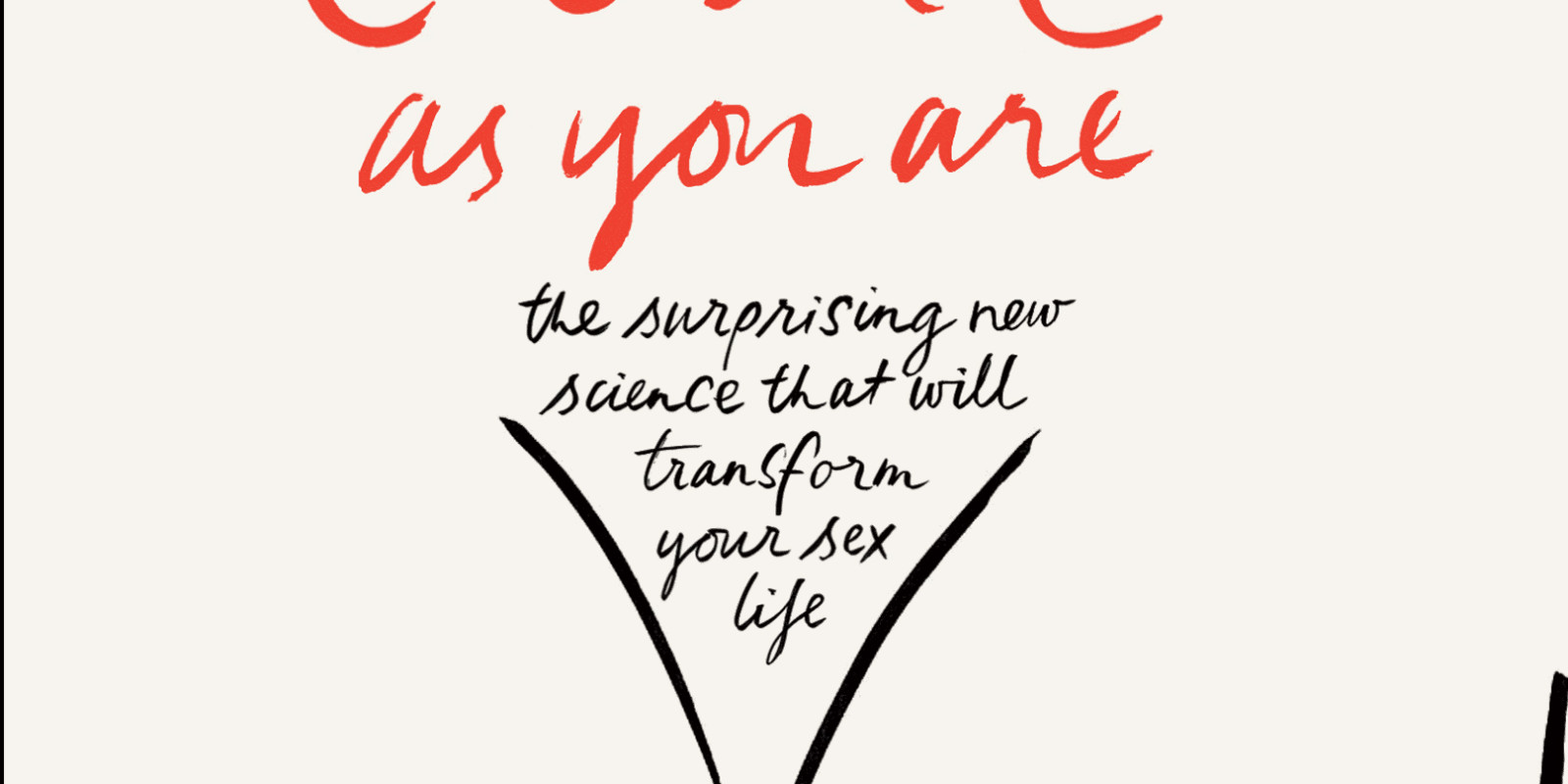
Come as You Are
Emily Nagoski
To be a sex educator is to be asked questions. I’ve stood in college dining halls with a plate of food in my hands answering questions about orgasm. I’ve been stopped in hotel lobbies at professional conferences to answer questions about vibrators. I’ve sat on a park bench, checking social media on my phone, only to find questions from a stranger about her asymmetrical genitals. I’ve gotten emails from students, from friends, from their friends, from total strangers about sexual desire, sexual arousal, sexual pleasure, sexual pain, orgasm, fetishes, fantasies, bodily fluids, and more.
Questions like . . .
Once my partner initiates, I’m into it, but it seems like it never even occurs to me to be the one to start things. Why is that?
My boyfriend was like, “You’re not ready, you’re still dry.” But I was so ready. So why wasn’t I wet?
I saw this thing about women who can’t enjoy sex because they worry about their bodies the whole time. That’s me. How do I stop doing that?
I read something about women who stop wanting sex after a while in a relationship, even if they still love their partner. That’s me. How do I start wanting sex with my partner again?
I think maybe I peed when I had an orgasm . . . ?
I think maybe I’ve never had an orgasm . . . ?
Under all these questions, there’s really just one question: Am I normal? (The answer is nearly always: Yes.)
This book is a collection of answers. They’re answers that I’ve seen change women’s lives, answers informed by the most current science and by the personal stories of women whose growing understanding of sex has transformed their relationships with their own bodies. These women are my heroines, and I hope that by telling their stories, I’ll empower you to follow your own path, to reach for and achieve your own profound and unique sexual potential.
After all the books that have been written about sex, all the blogs and TV shows and radio Q&As, how can it be that we all still have so many questions? Well. The frustrating reality is we’ve been lied to—not deliberately, it’s no one’s fault, but still. We were told the wrong story. For a long, long time in Western science and medicine, women’s sexuality was viewed as Men’s Sexuality Lite—basically the same but not quite as good. For instance, it was just sort of assumed that since men have orgasms during penis-in-vagina sex (intercourse), women should have orgasms with intercourse too, and if they don’t, it’s because they’re broken. In reality, about 30 percent of women orgasm reliably with intercourse. The other 70 percent sometimes, rarely, or never orgasm with intercourse, and they’re all healthy and normal. A woman might orgasm lots of other ways—manual sex, oral sex, vibrators, breast stimulation, toe sucking, pretty much any way you can imagine—and still not orgasm during intercourse. That’s normal.
It was just assumed, too, that because a man’s genitals typically behave the way his mind is behaving—if his penis is erect, he’s feeling turned on—a woman’s genitals should also match her emotional experience. And again, some women’s do, many don’t. A woman can be perfectly normal and healthy and experience “arousal nonconcordance,” where the behavior of her genitals (being wet or dry) may not match her mental experience (feeling turned on or not). And it was also assumed that because men experience spontaneous, out-of-the-blue desire for sex, women should also want sex spontaneously. Again it turns out that’s true sometimes, but not necessarily. A woman can be perfectly normal and healthy and never experience spontaneous sexual desire. Instead, she may experience “responsive” desire, in which her desire emerges only in a highly erotic context. In reality, women and men are different.
But wait. Women and men both experience orgasm, desire, and arousal, and men, too, can experience responsive desire, arousal nonconcordance, and lack of orgasm with penetration. Women and men both can fall in love, fantasize, masturbate, feel puzzled about sex, and experience ecstatic pleasure. They both can ooze fluids, travel forbidden paths of sexual imagination, encounter the unexpected and startling ways that sex shows up in every domain of life—and confront the unexpected and startling ways that sex sometimes declines, politely or otherwise, to show up. So . . . are women and men really that different?
The problem here is that we ’ve been taught to think about sex in terms of behavior, rather than in terms of the biological, psychological, and social processes underlying the behavior. We think about our physiological behavior—blood flow and genital secretions and heart rate. We think about our social behavior—what we do in bed, whom we do it with, and how often. A lot of books about sex focus on those
things; they tell you how many times per week the average couple has sex or they offer instructions on how to have an orgasm, and they can be helpful.
But if you really want to understand human sexuality, behavior alone won’t get you there. Trying to understand sex by looking at behavior is like trying to understand love by looking at a couple’s wedding portrait . . . and their divorce papers. Being able to describe what happened—two people got married and then got divorced—doesn’t get us very far. What we want to know is why and how it came to be. Did our couple fall out of love after they got married, and that’s why they divorced? Or were they never in love but were forced to marry, and finally became free when they divorced? Without better evidence, we’re mostly guessing. Until very recently, that’s how it’s been for sex—mostly guessing. But we’re at a pivotal moment in sex science because, after decades of research describing what happens in human sexual response, we’re finally figuring out the why and how—the process underlying the behavior.